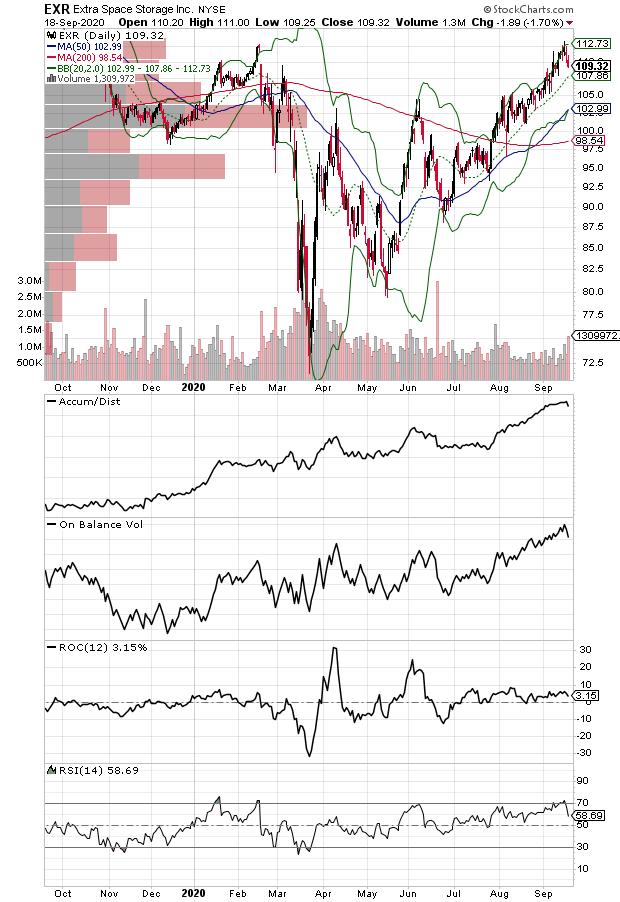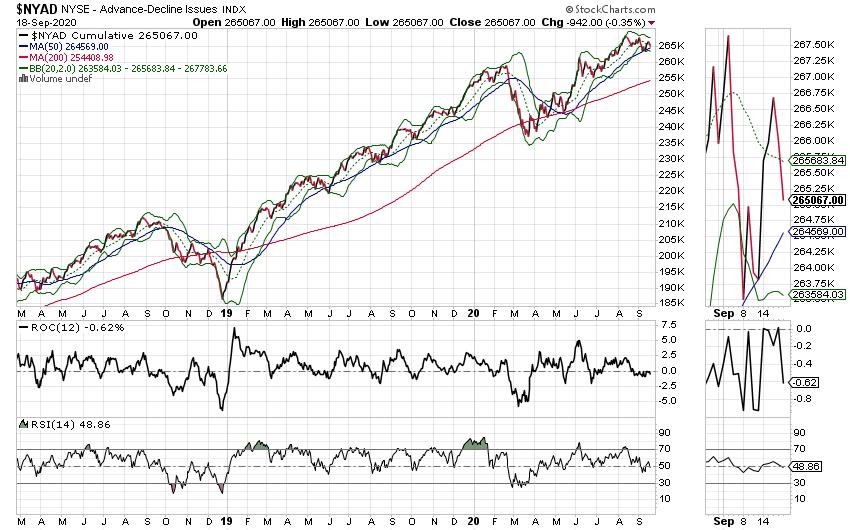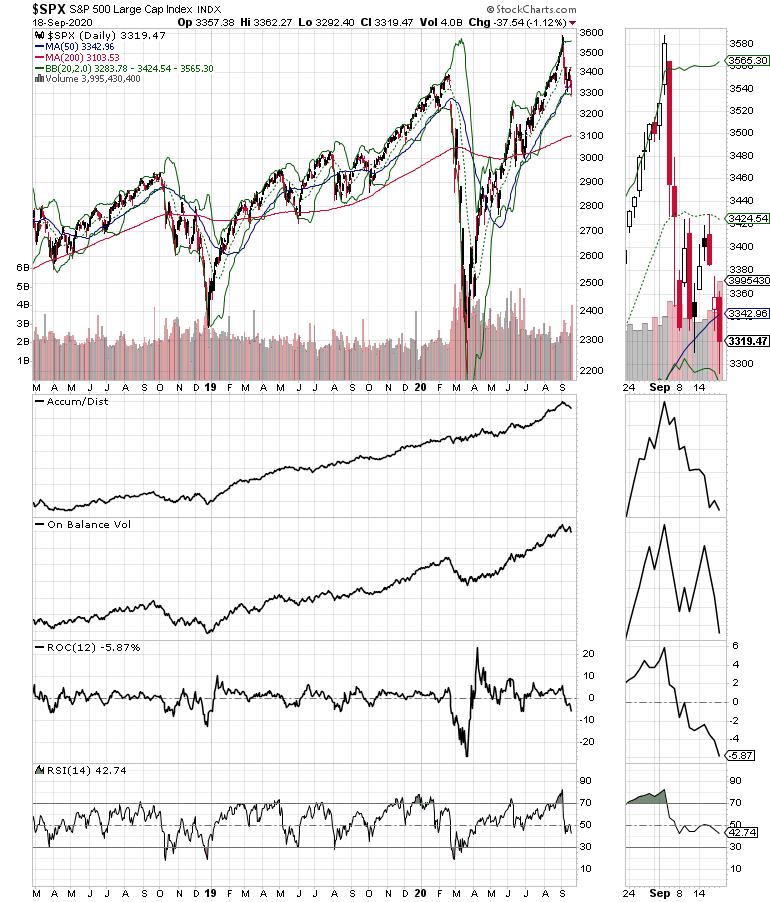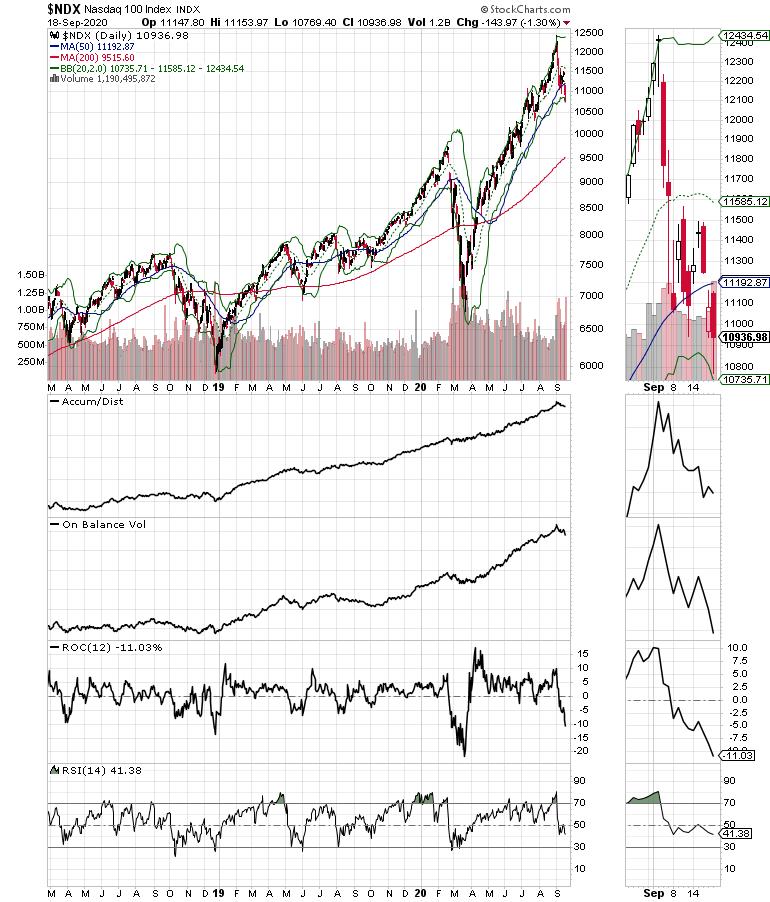The stock market's uptrend seems to be hanging on by a thread, yet the Federal Reserve has made it clear that it will continue to pump liquidity into the banking system to the tune of at least $120 billion per month, a $40 billion increase from its recent easing, while keeping interest rates near zero until 2023. Moreover, despite the recent selling, history shows that under normal circumstances, this type of central bank action should be creating a virtuous cycle where a rising stock market, which is now leading the economy as the number one influence in MEL, the complex system composed of the markets (M), the economy (E) and people's lives and financial decisions (L), should be moving higher.
In other words, unless this time is really different, the current stock market selloff should pass and the uptrend should resume. On the other hand, if the current relationship reverses and market decline continues, then the economy will likely slow, and the virtuous cycle could reverse and turn into a vicious cycle. Nevertheless, there is no substitute for being ready for any contingency, as I discuss directly below.
Is $120 Billion per Month Enough for the Algos?
Last week in this space, I noted: "Investors are caught in the middle of three major influences: the election, the Fed, and the algos," while further noting "so the big question is whether the Fed is pumping enough cash into the system to keep the stock market from breaking below key support or whether they have to resort to yet another nuclear money blast."
Indeed, the Fed decided to deploy at least a mini-bazooka last week by increasing its monthly market operations by one third, an amount that was good enough to kick the high-frequency (HFT) computer trading programs into a more aggressive buy mode for about an hour before the selling resumed. Thus, it's clear for now that the algos seem to want more from the Fed, so here are three things to consider if things don't change:
- As the election season heats up, the polls become tighter and the inter-party rhetoric becomes more explosive – especially regarding the Supreme Court – expect more volatility.
- The Fed's increased bond purchases are likely bullish for the industrial sector, but perhaps not for the entire market.
- The HFT algos will do two things: front run the money flow (up or down) and accelerate the prevailing trend.
What it all adds up to is that, until proven otherwise, the likelihood of an uneven market is on the rise until we get some real election clarity, which may or may not come before the end of the year. Of course, the entire scenario may change due to other external developments, especially in the geopolitical arena, such as if the polls suddenly reveal that one side or the other is finally gaining the upper hand decisively.
For more details on how to pick winning stocks in any market, visit my September 16, 2020 Virtual Money Show presentation by clicking here.
Trading Principles Remain Key to Success in this Market
As the bull market ages and the election nears, it's reasonable to expect market volatility in spite of the Fed increasing its money infusion into the bond market and the financial system via its bond and ETF purchases. As a result, it's important to review our sound trading principles:
- Don't fight the Fed
- Don't fight the market's dominant trend and momentum
- Stick with strong stocks in strong sectors
- Take profits on 20% winners
- Use 5-8% sell stops
- To minimize portfolio volatility, trade in small to moderate share lots
- Monitor down sectors for possible turnaround stocks to consider
- Use sound money management principles
- It's now a good time to start looking at options as risk management tools
Big Momentum Surge May be in Store for Extra Space Storage
Shares of the #2 self storage company in the U.S., Extra Space Storage (EXR), have been steadily rising over the last few weeks, but are now reaching a price point near $112 where momentum investors may start to add to positions aggressively should the stock survive the current general market pullback. Moreover, if the stock holds up in the next few days, the current mild downdraft may be a good opportunity to buy on the dip.

The company has certainly benefited from circumstances over the last few months and has recovered well from the initial COVID-19 marketwide decline. Specifically, the migration dynamic from large cities has been quite beneficial, as limited capacity from movers has led to a rise in demand for storage. In fact, as people wait for their new homes to be built or vacated in the suburbs or even in new cities, the demand for storage in new destinations is also growing. Of course, there is the potential for trouble in collecting rent for spaces if the economy slows, but for now buyers are in control and momentum is rising.
Especially bullish are the rise in Accumulation/Distribution (ADI) and On Balance Volume (OBV), along with a small Volume by Price (VBP) bar near $112. In fact, the key is the VBP, which is providing a last point of price resistance. If the stock can clear this barrier, the likelihood of a buying surge will increase as momentum investors and HFT algos will likely pile into the stock. At this point, if the stock can clear this final shelf of resistance, it could well move into the $120 area fairly quickly, barring any major external marketwide problems.
NYAD Ends Yet another Week on the Brink of Sell Signal
The New York Stock Exchange Advance Decline line (NYAD) closed the week at its 50-day moving average while the RSI for the indicator closed below 50, giving us yet another near-but-not-fully developed Duarte 50-50 Sell Signal.

As I've noted here previously, if this becomes a full blown sell signal it would be the fourth signal since the election of 2016, with previous signals noted in the bullets below:
- February 2018
- October 2019
- February 2020
Moreover, since each of the three sell signals led to a dramatic selling spree, with each succeeding signal preceding a more violent selling spree than the prior one, and with the market having a lot to think about these days, we could see a huge decline, perhaps even in a short period of time. Specifically, the most recent was in March of 2020, when the S&P 500 (SPX) was down 30% in six weeks.

For their part, the S&P 500 (SPX) and the Nasdaq 100 (NDX) indices are both showing fairly weak trading patterns of late, with the latter being the worse of the two as aggressive sellers have been pummeling the technology sector.

In fact, both SPX and NDX have already delivered their own version of the 50-50 sell signal, which should raise concern among investors unless these events are not reversed.
For a full in-depth tutorial on how to use the NYSE Advance Decline line to figure out the market's dominant trend, check out my latest Your Daily Five video here.
Don't Fight the Fed, But Be Selective and Consider Options
With stock market valuations near record highs and a bumpy election taking shape, it seems counterintuitive to wish to buy stocks. But, in some cases, that's the current situation faced by investors. And, to be frank, given the potential for rapid market swings, the current market is not for everyone.
Nevertheless, active investors should continue to cautiously trade the dominant trend which, until it is clearly reversed, remains to the upside as the Federal Reserve's easy money works its way into the stock market, moving stocks higher. Of course, given the fact that a fool and his money are soon parted, it is imperative to follow sound trading principles, including sticking to strong stocks in strong sectors, to deploy well-applied sell stops and to stay disciplined by taking profits where appropriate, while also trading in small-to-moderate lots in order to prevent portfolio volatility.
Finally, as stock prices have come down, the spread in the options market has improved and, due to increasing participation by individual investors, liquidity seems to have improved a bit. What that means is that it's a good time to use options once again as risk management and income vehicles.
I just posted a new options trade that you can view when you sign up for a free trial of Joe Duarte in the Money Options.com (click here). To learn more about options, check out my February 2020 Money Show interview here.
Joe Duarte
In The Money Options
Joe Duarte is a former money manager, an active trader and a widely recognized independent stock market analyst since 1987. He is author of eight investment books, including the best selling Trading Options for Dummies, rated a TOP Options Book for 2018 by Benzinga.com and now in its third edition, plus The Everything Investing in Your 20s and 30s Book and six other trading books.
The Everything Investing in Your 20s and 30s Book is available at Amazon and Barnes and Noble. It has also been recommended as a Washington Post Color of Money Book of the Month.
To receive Joe's exclusive stock, option and ETF recommendations, in your mailbox every week visit https://joeduarteinthemoneyoptions.com/secure/order_email.asp.
